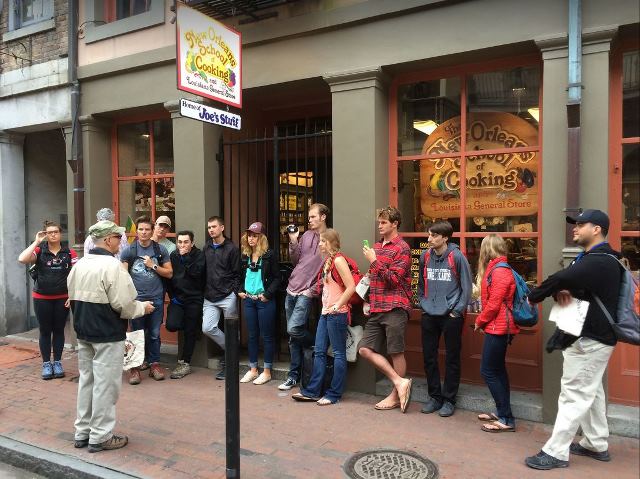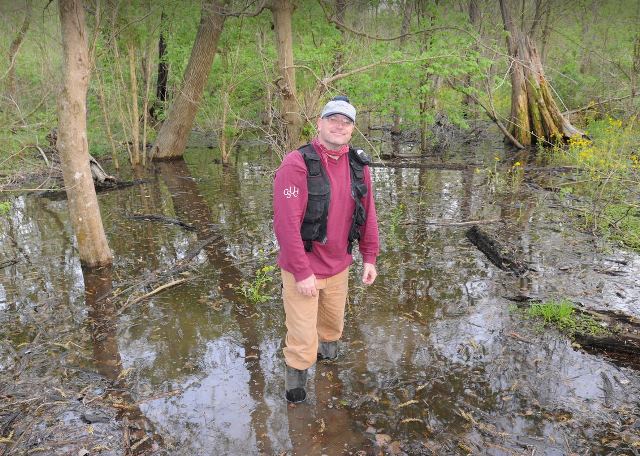
Camarillo, Calif., March 24, 2015 – While attending Fillmore High School 10 years ago, CSU Channel Islands (CI) senior Erik Storey met a fellow student whose family relocated to Southern California because of the devastation caused by Hurricane Katrina.
“He was on the basketball team and I was, too,” said Storey, 24. “He never talked about it much, but I could tell it affected him. I could see it in his face.”
Storey always had questions about what his classmate went through on August 29, 2005, when a Category 5 hurricane hit the city of New Orleans, killing more than 1,800 people and collapsing more than 50 levees and flood walls designed to protect the city.
From March 12 to March 22, Storey and 11 other students traveled to New Orleans to get a ground-level look at how the hurricane still affects the landscape 10 years later.

The students—more than half of them Environmental Science & Resource Management (ESRM) majors—got their hands dirty, according to ESRM Associate Professor Sean Anderson, Ph.D., who led the trip.
The students did plant restoration in some of the most damaged wetland areas, assessed their previous restoration efforts, installed food gardens, and other volunteer work in which CI students learned while lending their backs to the ongoing recovery efforts across the Gulf Coast, Anderson said.
The students began their trip with a tour of the failed levees from Tulane University’s Steve Nelson, Ph.D., who discussed why certain levees failed, and the ongoing consequences of those failures.
“We are losing wetlands in southern Louisiana at the rate of roughly one football field every 45 minutes,” Anderson said. “Hurricane Katrina and Rita jumped us ahead roughly 50 years in terms of the amount our wetland loss, relative to the background loss rate.”
Anderson has been taking students from all majors to New Orleans since 2005, which is why, over the years, the tour has evolved to include presentations from scientists; Pulitzer Prize-winning writers; lawyers; mayors; fishermen; musicians; chefs; artists and local residents.
“Much of our credibility and unique access we have to the goings-on and culture of southern Louisiana comes from the fact that: 1) students are taking time out of their spring break that they could be spending sleeping in Cabo San Lucas; and 2) that we have kept coming back, year after year after year,” Anderson said.
At CI, this type of work/learn expedition is called “service learning,” which is part of CI’s teaching philosophy. The tour is possible in part because of a CI fund earmarked for service learning projects called the Instructionally-Related Activities fund.
# # #
About California State University Channel Islands
CSU Channel Islands(CI) is the only four-year, public university in Ventura County and is known for its interdisciplinary, multicultural and international perspectives, and its emphasis on experiential and service learning. CI’s strong academic programs focus on business, sciences, liberal studies, teaching credentials, and innovative master’s degrees. Students benefit from individual attention, up-to-date technology, and classroom instruction augmented by outstanding faculty research. CI has been designated by the U.S. Department of Education as a Hispanic-Serving Institution and is committed to serving students of all backgrounds from the region and beyond. Connect with and learn more by visiting CI's Social Media.
